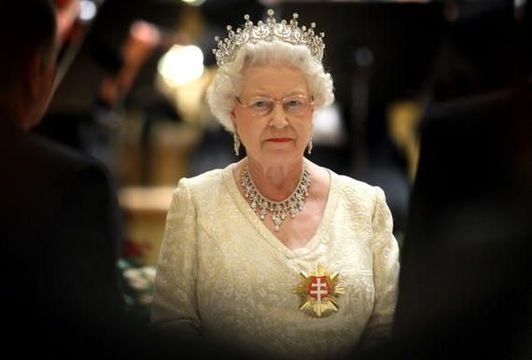
Queen ElizabethGetty images
Documents have emerged that detail the plan for when Queen Elizabeth eventually passes away
POLITICO is a media company dedicated to political journalism that covers current affairs in both the United States and the wider world.
The company has gained access to documents that offer further clarity regarding what will happen when Queen Elizabeth eventually passes away.
Read more
While some information has been leaked in the past pertaining to the process, this is the most comprehensive and detailed account of the plans that are in place for when operation 'London Bridge' will be carried out.
Thankfully, Queen Elizabeth is in good health at the ripe old age of 95, so there is no sign that the plan will need to be enacted anytime soon.
With this in mind, let's have a look at the plans that are in place should the Queen die
In the hours that follow the Queen's death, wheels will immediately start turning and what will be referred to as 'D-Day' will commence.
A “call cascade” will take place informing the prime minister, the cabinet secretary (Britain’s highest-ranking civil servant) and a number of the most senior ministers and officials. The PM will be informed by the queen’s private secretary, who will also tell the Privy Council Office, which coordinates government work on behalf of the monarch.
The royal household will issue an “official notification” delivering the news to the public. Ministers and senior civil servants will be informed, while flags at Whitehall will be flown at half-mast.
The U.K. parliament and the devolved legislatures in Scotland, Wales and Northern Ireland will also adjourn. If parliament is not sitting, it will be recalled.
The Royal Family's social media pages will be amended to reflect on the event that has occurred and plans will be put in place for a funeral to be held within 10 days.
No politician or public representative will speak publicly until the Prime Minister has made an official statement to the press. Following this, the Ministry of Defence will arrange for gun salutes to take place at all saluting stations. A national minute’s silence will be announced. The PM will then meet with the new King, and at 6 pm that day, the new King will make an address to the nation.
The day after the Queen's death will see Charles officially coronated as King in St. James's Palace. The next day, the Queen's coffin will be transported to Buckingham Palace.
After 3 days of Royal traditions, on the 5th day following Queen Elizabeth's death, the procession from Buckingham Palace to the Palace of Westminster will take place along a ceremonial route through London. There will be a service in Westminster Hall following the coffin’s arrival.
The queen will lie in state at the Palace of Westminster for three days, in an operation codenamed FEATHER. Her coffin will lie on a raised box known as a catafalque in the middle of Westminster Hall, which will be open to the public for 23 hours per day. Tickets will be issued for VIPs so they can have a time slot.
In this period thousands of people will be expected to flock to London to pay their respects. For this, the Home Office will be in charge of all security concerns and safety in the capital.
On the 10th day, the funeral will be held. What will be considered a “Day of National Mourning” will effectively be a bank holiday in the United Kingdom.
The state funeral itself will be held at Westminster Abbey. Processions will take place in London and Windsor. There will be a committal service in St. George’s Chapel at Windsor Castle, and the queen will be buried in the castle’s King George VI Memorial Chapel.
With all that being said, let's hope none of it will be coming to fruition anytime soon!
POLITICO obtained documents outlining what the UK government will do if Queen Elizabeth II passes away.
The plan includes details ranging from the funeral procedure to how to make the announcement on social media. https://t.co/ED2F5srQdZ
— POLITICOEurope (@POLITICOEurope) September 5, 2021





Comments